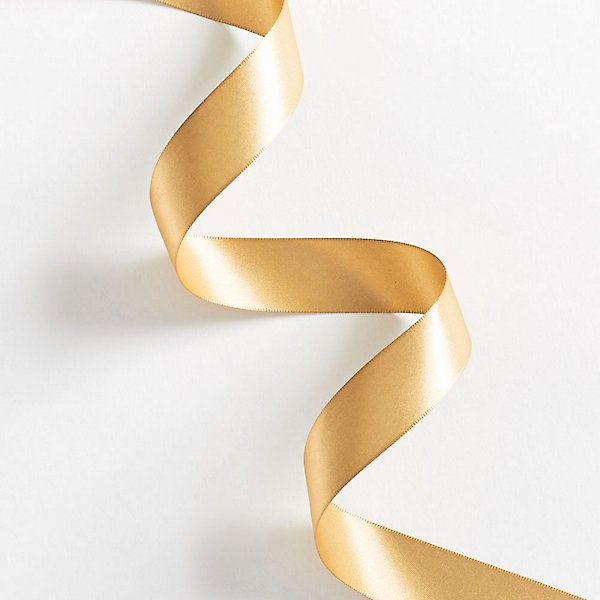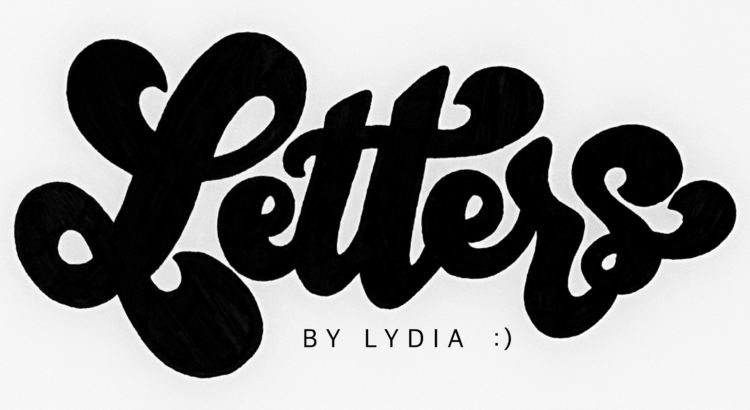Welcome back to Letters by Lydia! This week I’m gonna give you all a rundown of something called ribbon lettering, which looks a little something like this (you might recognize that last picture from last week!):



In my opinion, the easiest way to do ribbon lettering is to use something most you probably already have: a highlighter. My personal favorites are the zebra mildliners, but any old highlighter with a chisel tip like this will do!  When it comes to actually using this technique, the first thing you need to do is make sure you’re holding the highlighter the right way. Instead of holding it like you would to highlight a something, where it draws a thick line horizontally, you want it to be the opposite way; once you’ve rotated your pen so you’re holding it correctly, it will draw a thin horizontal line and a thick vertical line. Then you can start writing! You want to keep your pen oriented that same way the whole time, because that’s what will give you this kind of 3D/layered ribbon effect. Another tip is to keep your strokes simple, especially when you’re first starting out. For example, instead of writing a lowercase “a” like you would in your normal handwriting, it might be easier to write it as a circle connected to a vertical line.
When it comes to actually using this technique, the first thing you need to do is make sure you’re holding the highlighter the right way. Instead of holding it like you would to highlight a something, where it draws a thick line horizontally, you want it to be the opposite way; once you’ve rotated your pen so you’re holding it correctly, it will draw a thin horizontal line and a thick vertical line. Then you can start writing! You want to keep your pen oriented that same way the whole time, because that’s what will give you this kind of 3D/layered ribbon effect. Another tip is to keep your strokes simple, especially when you’re first starting out. For example, instead of writing a lowercase “a” like you would in your normal handwriting, it might be easier to write it as a circle connected to a vertical line.



Once you feel comfortable with that, you’re pretty much good to go! This is definitely one of those things that gets easier with practice. I love doing this kind of lettering because it’s very formulaic and reliable, so it’s nice to use for notes headings or things like that, as well as some mind-numbing doodling. That said, there are a lot of options to spice it up! I illustrated a few below–as you can see, you can do this by just outlining the sections, or coloring in the shadowy parts, or both, like I mentioned before. But you can also do this in cursive or in print, outline and color in the shadows with the same color, a different color from your base, or a different color entirely. The options are really fun to play around with, so once you get the basics of it, enjoy playing around with all the different options!

Hopefully this was educational and made at least some sense! Please feel free to leave any other questions you have, and have a lovely week!


 As I’m sure you’ve all realized by now, the size of my pen collection is a bit absurd, and definitely not the most conducive to college housing. I had to leave a lot behind when I came to school, so whenever I go home, I get really excited to use them all again. I have a lot at home right now, and a little more room than I thought I would for pens, so I thought it would be fun to show you guys how I went through them all and picked what to bring back to Ann Arbor. For the major pen sets, I included their swatches and my opinions on them below. I know the swatches for some of the smaller pens are really tough to see, but I hope you can at least kind of see the colors and the size of the nib. I did also bring home the posca set you can see in the box picture, but I forgot to take pictures of those swatches.
As I’m sure you’ve all realized by now, the size of my pen collection is a bit absurd, and definitely not the most conducive to college housing. I had to leave a lot behind when I came to school, so whenever I go home, I get really excited to use them all again. I have a lot at home right now, and a little more room than I thought I would for pens, so I thought it would be fun to show you guys how I went through them all and picked what to bring back to Ann Arbor. For the major pen sets, I included their swatches and my opinions on them below. I know the swatches for some of the smaller pens are really tough to see, but I hope you can at least kind of see the colors and the size of the nib. I did also bring home the posca set you can see in the box picture, but I forgot to take pictures of those swatches.

 After that came all the random, individual pens. I tested a ton, but here are the ones I brought back. From left to right:
After that came all the random, individual pens. I tested a ton, but here are the ones I brought back. From left to right:










